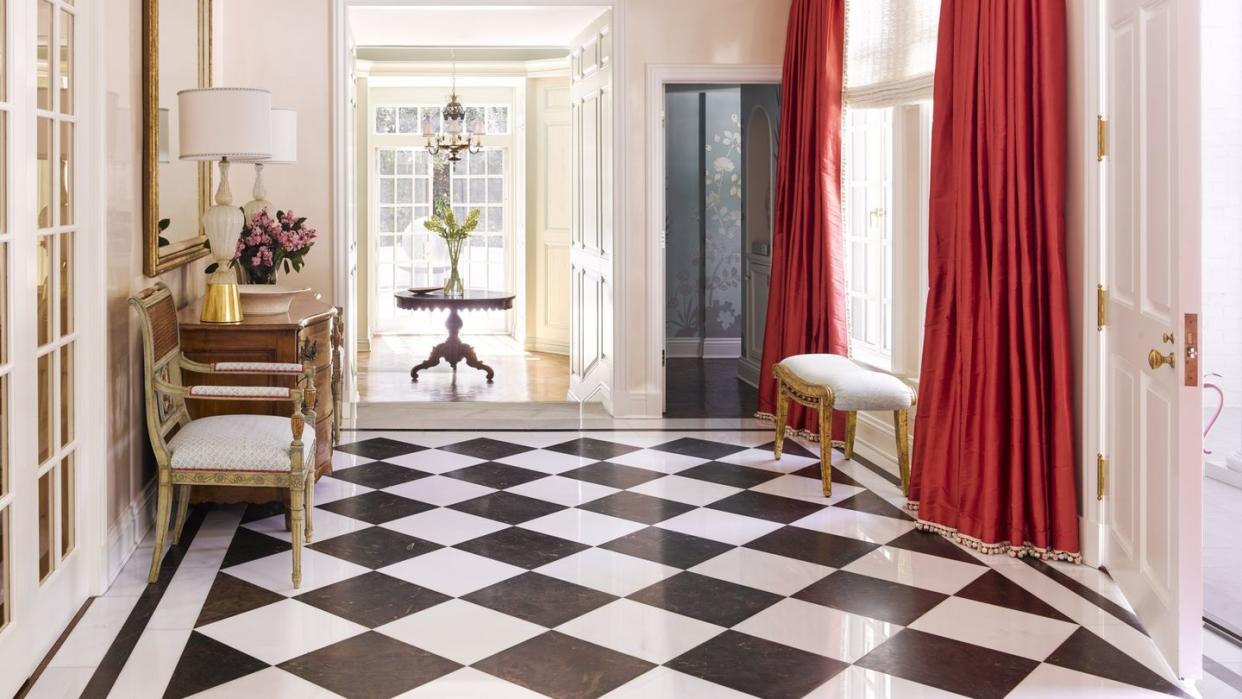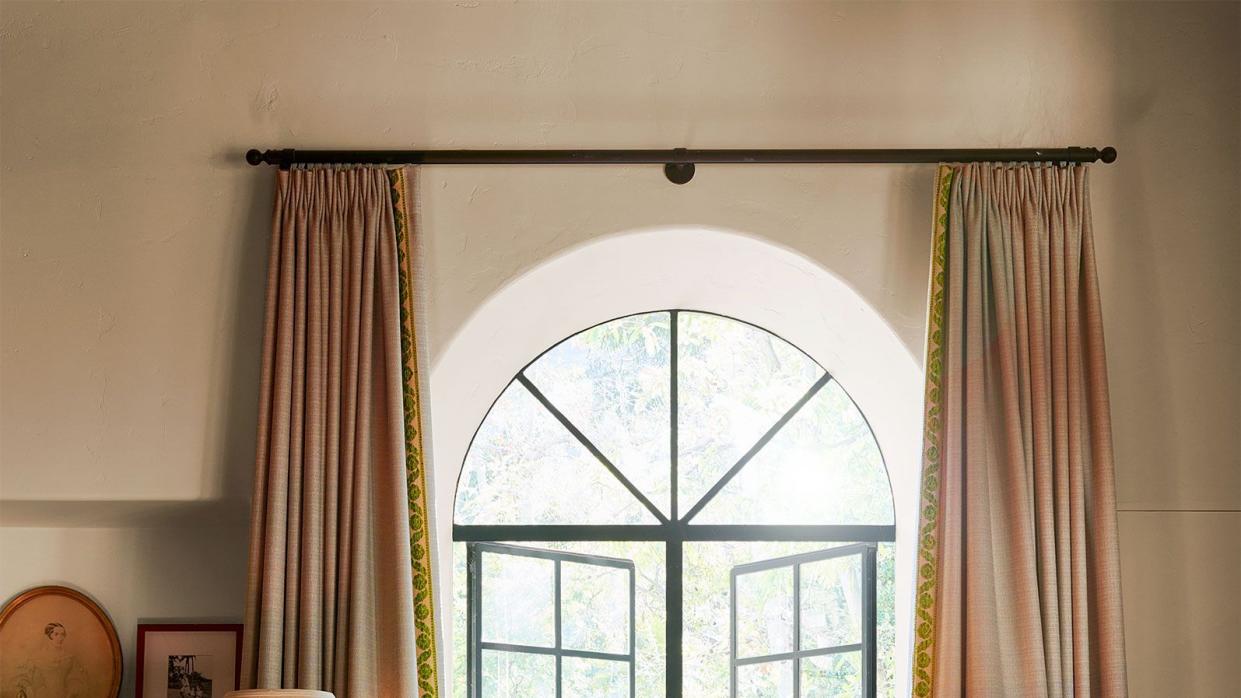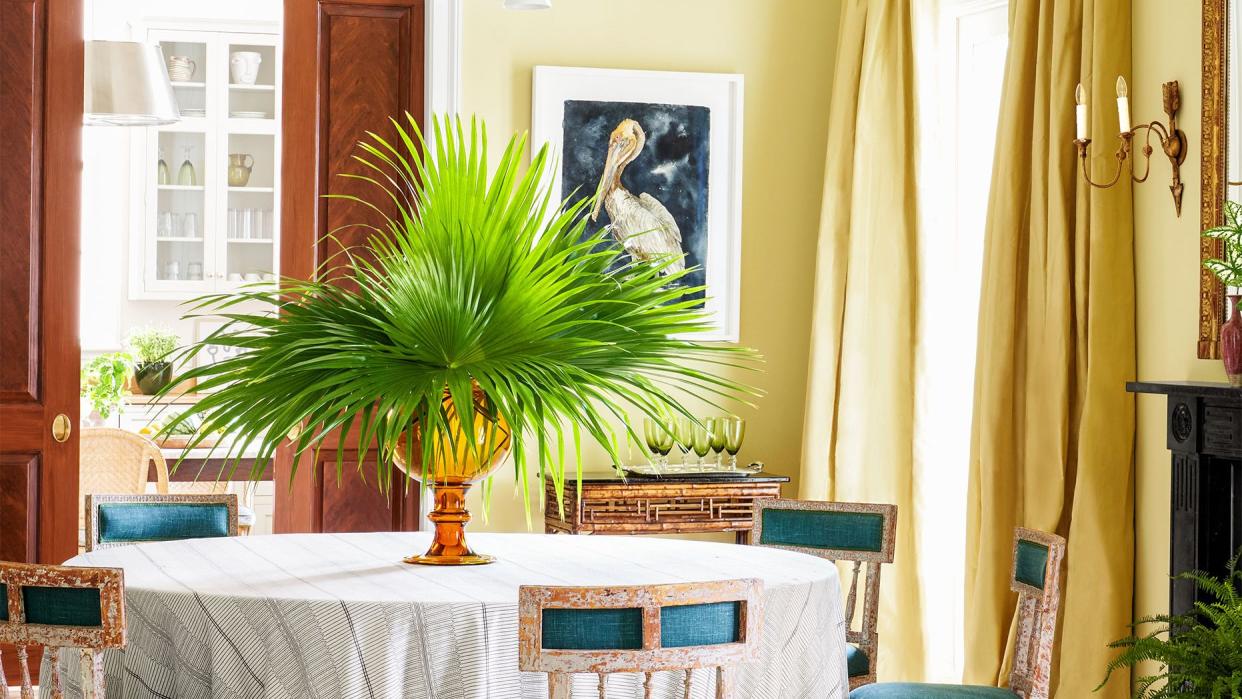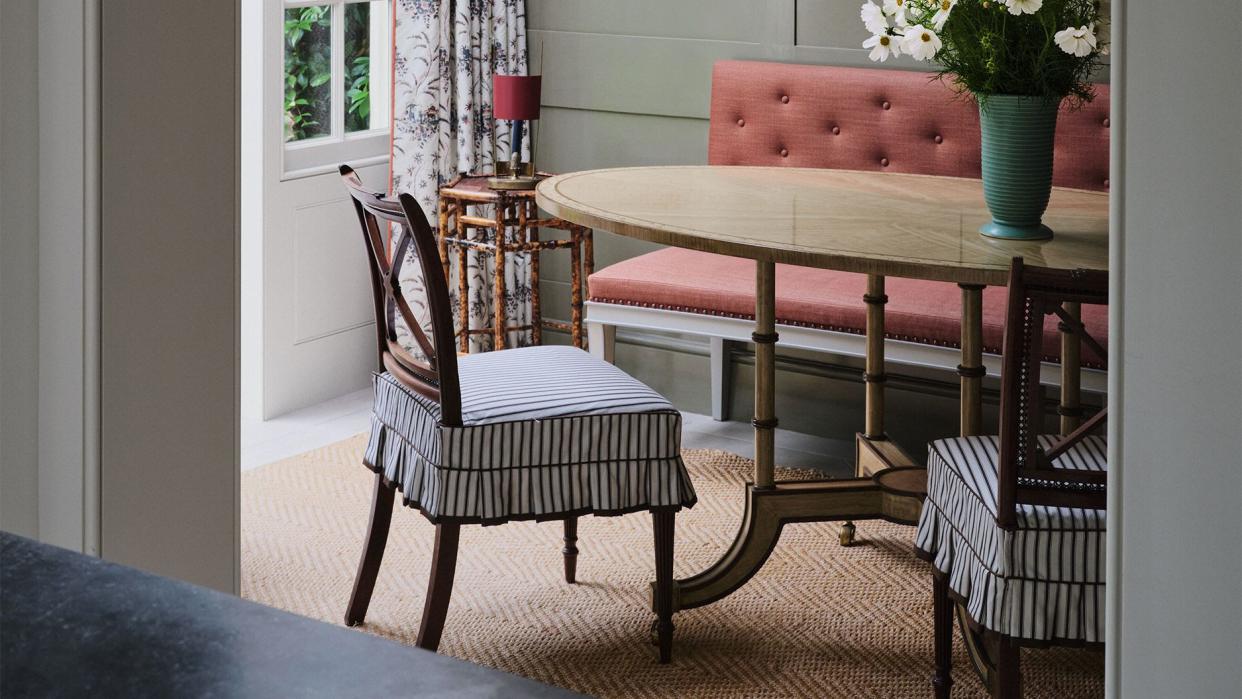Experts Say Your Curtains Should Be This ONE Length.

"Hearst Magazines and Yahoo may earn commission or revenue on some items through these links."
Window treatments can be a useful and impressive way to polish any space. Not only do they provide privacy, but they can add a pop of personality to any room. But curtains, the most utilized form of residential window treatments, can be tricky to pull off properly—especially as far as curtain length is concerned. To best prep for a proper curtain refresh, read on for our tried-and-true, expert-vetted tips for curtains, including standard lengths, how to measure at home, and when to go custom.
Best Practices for Choosing Curtain Lengths
“Generally speaking, drapery panels should come as close to the floor as possible, but it all depends on the functionality, desired look, and floor surface,” shares Adam Skalman, vice president of sales development at the Shade Store. For example, if you plan to open and close your drapery panels each morning, it is best to have the drapery hover just over the floor for ease of use. “It’s also important to consider the floor—drapery can have more of a puddle or a break on hard flooring as they would still be easy to operate,” Skalman adds.

Lisa Chung, a veteran design director in Gensler’s hospitality practice, agrees, explaining that for a luxurious hospitality look, curtains should just skim the floor. “This way, whether the curtains are custom or not, they appear to be. This approach is also practical for cleaning purposes, as it collects less dust than extra-long curtains and allows the vacuum cleaner or broom to glide right under it when cleaning,” the designer explains.
It’s not just the curtains that matter, as mounting is another critical element to consider. Skalman suggests mounting curtains higher than the window frame, up to the crown molding or at least halfway between the top of the window frame and the ceiling. “This helps your windows and ceilings appear taller—giving the illusion of a larger space,” he adds.
Hardware is another way to make curtains stand out. According to Chung, “The right decorative hardware will complete the ‘look’ and complement the application and style of the window treatments.” Want a traditional look? Opt for ornamental or timber rods. Looking for something more sleek? Choose minimal profiles and modern materials.
How to Measure for Curtain Length
The first piece of the curtain length success puzzle is measuring your windows properly. The Shade Store breaks this process down into five easy steps.
First, gather all necessary materials, like measuring tape or an electronic measuring tool, a level, a pencil, and a sturdy stepladder.
Next, determine the mounting style you’d like for your windows. There’s inside mount, with curtains inside the window frame, or outside mount, where they’re mounted out of the frame; the latter is the more common approach. If you go for an outside mount, you’ll also need to decide if you want to hang the window treatments from the wall (most likely) or from the ceiling (less common but good for low ceilings).
Third, measure the window. For an inside mount, according to the Shade Store, measure the height and width of the window from the inside of the trim pieces from left to right and top to bottom. For an outside mount, do the same thing, just measure from the outside of the trim pieces from left to right and from top to bottom.
Next, measure for width. That begins with measuring for the drapery rod. Skalman recommends extending your hardware at least 8 to 12 inches beyond the left and right of the window. He says, “This makes the windows look wider and allows the panels to stack nicely on either side without covering too much of the glass.” For an inside mount approach, the curtain rod will be equal to the width of the window (determined in the prior step). The other part of measuring for curtain width is to consider the width the drapery will cover (and do a little math). For a nice, full window treatment look (outside mount only), multiply that width by one and a half or two. “Curtains should be at minimum one-and-a-half times the width of your window—ideally two times the width,” adds Chung. “This gives them a fuller, more luxe appearance framing your window.”
Finally, measure for curtain length. Curtain length means the distance from the rod to the floor. There are a few approaches to this, but the skimming-the-floor look is recommended by both of our expert sources. These curtains will hang just above or on the floor. Another option is to puddle the fabric with an additional three to six inches over the floor-kiss length. This can lead to a more luxurious end result, but it’s not the favored option by either Chung or Skalman.

Standard Lengths for Curtains
Now that you know your measurements for both window and curtain needs, it’s time to shop! Curtains come in standard lengths of 84, 96, and 108 inches with a standard width of 54 inches, according Skalman at the Shade Store. However, “not all windows fit these standard drapery measurements,” he cautions. When purchasing, bring all your measurements to the store (or have them with you when you shop online). Then round to whichever length is closest to your measurements. Going longer is better than shorter, since curtains can be shortened more easily than they can be elongated.
When to Choose Custom Curtains
Other than the steep price tag, there is basically zero downside to a custom window treatment. There’s no math for you to do, and custom anything, especially curtains, is an effective way to bring sophistication to any space in the home. “The great thing about custom window treatments is that you aren’t limited to standard sizes and can have window treatments made to the exact specs of your window, for a look that feels more elevated and provides unlimited options of fullness and stack,” Skalman says. “With custom drapery, you can choose the hardware style, finish, and exact length.”

Chung likes custom curtains, as they give an intentional, polished look that is difficult to achieve with standard curtains. She continues, “If you’re just starting to consider going custom, start with a high-visibility space in your home or a uniquely shaped window that is tough to address with something off the shelf. In addition to their aesthetic appeal, custom curtains allow you to select materials that can offer different benefits including privacy, light control, sound control, and energy efficiency, depending on your needs.”
You Might Also Like
